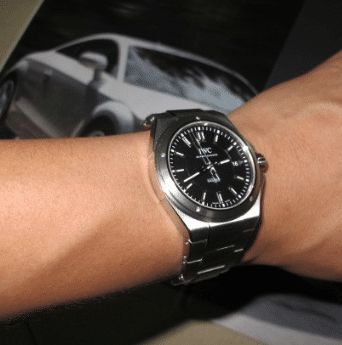手表表芯什么样子的好用
```html
Understanding Watch Movements
When it comes to understanding watches, one of the most crucial components to consider is the watch movement, also known as the "heart" of the watch. A watch movement is the mechanism that powers the watch and drives its timekeeping functions. There are several types of watch movements, each with its own characteristics and features.
Quartz movement is one of the most common and affordable types of watch movements. It utilizes a quartz crystal to regulate the timekeeping. When an electric current is applied to the quartz crystal, it vibrates at a specific frequency, which is used to accurately measure time. Quartz movements are known for their accuracy and low maintenance requirements. They are often found in everyday watches, including both analog and digital varieties.

Mechanical movement, often referred to as "manual" or "handwound" movement, is a traditional type of watch movement that relies on a series of intricate gears and springs to keep time. With a mechanical movement, the watch must be wound manually, typically by turning the crown, to store energy in the mainspring. As the mainspring unwinds, it releases energy to power the watch. Mechanical movements are admired for their craftsmanship and the intricate engineering involved. They are often found in luxury and highend watches.
Automatic movement, also known as "selfwinding" movement, is similar to mechanical movement but with an added component: a rotor. The rotor is a small weight that moves with the motion of the wearer's wrist, which winds the mainspring automatically. This eliminates the need for manual winding. Automatic movements offer the convenience of not needing to be wound regularly, as long as the watch is worn regularly. They are popular among watch enthusiasts who appreciate the blend of traditional craftsmanship with modern convenience.
Kinetic movement combines elements of both quartz and mechanical movements. It utilizes a quartz crystal for timekeeping accuracy but also features a rotor similar to that found in automatic movements. However, instead of winding a mainspring, the rotor in a kinetic movement charges a rechargeable battery. This battery powers the quartz movement, providing greater accuracy and reliability than traditional quartz watches. Kinetic movements are often found in sports and outdoor watches.
Understanding the different types of watch movements is essential for selecting the right timepiece to suit your needs and preferences. Whether you prioritize accuracy, craftsmanship, or convenience, there is a watch movement that caters to your requirements. Whether it's the reliable precision of quartz, the timeless charm of mechanical, the convenience of automatic, or the innovative technology of kinetic, each type of movement offers its own unique appeal.